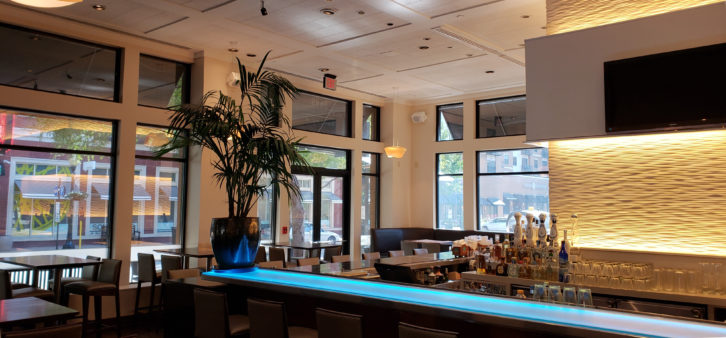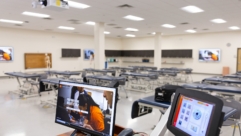
With 21 locations in the Dallas/Fort Worth area, Mi Cocina has become a regional dining institution since opening in the upscale Preston Forest district in 1991. But a local chain must keep pace with changes in the business to continue thriving in the crowded entertainment market, explains Danny Salinas of AlleyCat AV, who has designed and installed networked sound systems in at least eight restaurants in the past year. For Mi Cocina, competing meant upgraded sound systems, so the owners called Salinas, who had worked with them on an earlier project.
The team at M Crowd Restaurant Group decided to start with their West Village location, in the heart of Dallas. A well-appointed establishment graced with its own art gallery, Mi Cocina West Village is a sizable venue containing a lounge and a private seating area, in addition to the main dining and bar areas.
Salinas installed a Symetrix Prism 4×4 DSP as the core of the system. He retained the existing passive speakers and analog amplifiers and installed a Symetrix xOut 12 Dante-to-analog output expander, adding 12 mic/line outputs to feed the analog amplifiers.
The old sound system relied on walls commandeered by multiple control panels. Salinas set up a Symetrix ARC-WEB virtual user interface for browser-based control of the Symetrix system, then replaced the multitude of control panels with just two Symetrix ARC3 wall panels. Salinas observes that Symetrix makes things even easier by remembering the small things, such as an easy way to integrate user devices with headphone jacks. “Even the 3.5 mm to Euroblock cables I use come from Symetrix,” he confirms. “It’s perfect. I don’t have to make cables, and they work great. I rely on them.”
Live musicians plug into XLR jacks that route into the network. The Prism routes the performance only to the bar or to any combination of zones in the venue.
Recorded music was also an issue. With as many venues as M Crowd operates, the company knows exactly what crowd it will have in any room at a given hour and what kind of music that crowd most wants to hear. Salinas put together a scheduled playlist system, with up to 300 tracks in each playlist, so there can be great variety in the music, yet the playlists set the mood the owners want in each space.
“I love that I can manipulate the sound for each speaker,” Salinas says. “Maybe I want one speaker to have more low end because it’s on one side, while I want this other speaker to give me more midrange because it’s over there. I can cater to the environment, and I can do it on the fly, live. That is a really big deal.”










